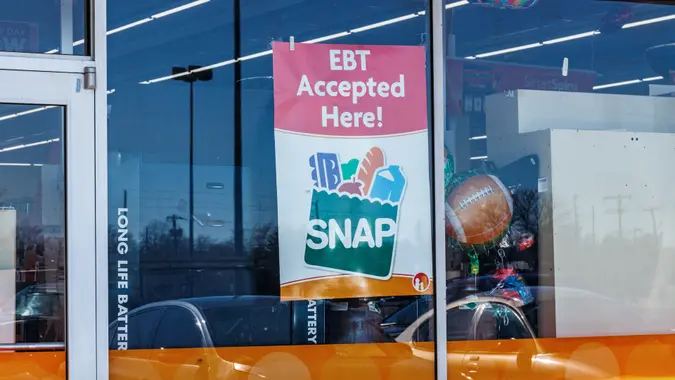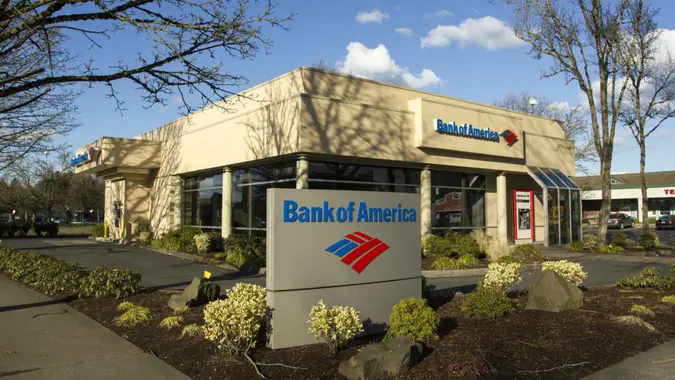6 Reasons ‘Middle Class’ Feels So Different Across the US

Commitment to Our Readers
GOBankingRates' editorial team is committed to bringing you unbiased reviews and information. We use data-driven methodologies to evaluate financial products and services - our reviews and ratings are not influenced by advertisers. You can read more about our editorial guidelines and our products and services review methodology.

20 Years
Helping You Live Richer

Reviewed
by Experts

Trusted by
Millions of Readers
The traditional concept of what entails being part of the middle class is living comfortably without struggling month to month, and being able to save up or go on family vacations.
That said, who feels “middle class” can dramatically change from state to state.
“Apart from our different wants and preferences, the most obvious reason the definition of middle class varies from individual to individual across the states in America is the fact that cost of living is different everywhere,” said Mafe Aclado, finance expert and general manager at Coupon Snake. “I mean, from housing costs and grocery costs to healthcare and child care, all these vary across the states.”
Hence, this explains why individuals in the same income bracket may feel differently about their financial success, irrespective of the fact that they bring home the same amount of money.
Dennis Shirshikov, finance expert and head of growth at GoSummer, equally noted that the concept of being middle class in the U.S. is a fluid and multifaceted one. He said it’s “influenced by a variety of factors ranging from geographic location to local cost of living and personal financial habits.”
He explained this variance is why what constitutes as the middle class can feel vastly different depending on where one resides. Below is an in-depth look at the reasons why.
Geographic Cost of Living
One of the primary reasons for the disparity, according to Shirshikov, is the cost of living, which fluctuates greatly from one region to another.
“For example, the cost of housing in metropolitan areas like San Francisco or New York City is substantially higher compared to cities in the Midwest.”
This difference in living expenses means that a middle-class income in one area may barely cover basic needs, while in another area, it allows for a more comfortable lifestyle.
Nischay Rawal, certified public accountant and founder of NR Tax & Consulting, observed the same.
“As an accountant who has worked with small businesses across the country, I’ve seen the middle class experience differ greatly based on location and personal circumstances,” he said.
For clients in small towns, he said a $50,000 income may afford homeownership and vacations while in major cities, it barely covers essentials.
Income Levels and Job Markets
Regional job markets and average income levels also play a significant role.
“Areas with higher average salaries often have higher costs associated with housing, healthcare, and education,” said Shirshikov.
Conversely, he noted that in regions where wages are lower, the middle-class lifestyle might still provide a reasonable standard of living due to the lower cost of goods and services.
Cultural and Social Expectations
Cultural expectations and social norms can also influence perceptions of what it means to be middle class.
Shirshikov explained that in some regions there might be a greater emphasis on owning property, driving certain types of vehicles, or participating in specific leisure activities, all of which can impact how middle-class status is perceived and experienced.
“For instance, in suburban areas, homeownership is often seen as a hallmark of being middle class, whereas in urban environments, renting an upscale apartment might be more common and equally indicative of middle-class status,” he explained.
Rawal agreed, noting that cost of living primarily shapes lifestyle, not income alone.
“A family earning $100,000 in Houston likely lives comfortably while the same in NYC means sacrificing to pay rent,” he said. “I build custom plans based on clients’ unique realities and priorities. A one-size-fits-all solution for the middle class fails as each person’s situation varies.”
Economic Mobility and Stability
Economic mobility and financial stability are also crucial elements that affect the middle-class experience.
“In areas with robust job growth and opportunities for advancement, individuals might feel more secure and optimistic about their financial future,” Shirshikov explained.
On the other hand, he noted that regions with stagnant job markets or declining industries can lead to a sense of economic insecurity, even among those who technically fall within middle-class income brackets.
Rawal also observed that government policies aiming to assist the middle class often miss the mark by using broad definitions.
“A higher minimum wage may help some but do little for those struggling to afford housing and college savings with higher incomes. Initiatives work best when custom to local economies.”
Overall, Rawal said feeling financially secure comes from choices within one’s control, not generic programs.
“The middle-class experience differs from place to place and person to person. Help is most impactful when personalized.”
Personal Financial Management
According to Shirshikov, individual financial management practices, such as budgeting, saving and investing, can also contribute to the varied experiences of the middle class.
“Those who effectively manage their finances, regardless of geographic location, often feel more comfortable and secure.”
On the contrary, poor financial habits can lead to stress and instability, even for those earning a middle-class income.
Size of Family
According to Aclado, it’s also difficult for middle-class families with more mouths to feed — and more bills to pay — to feel like they are a part of the middle class. And though a contributing factor, she said that inflation alone isn’t the only reason for this.
“I mean, for a family earning a middle class income, paying private school tuition for three kids in high-school, with the eldest kid already in college (more tuition), plus kindergarten/child care cost for the young toddler in the family — it’s just difficult to feel middle class when your income is just enough to cover your necessary costs.”
She continued, “When every of your big purchases would just have to be planned and budgeted for ahead of time, but for other middle class individuals with less financial loads, the reverse seems to be the case.”
The Bottom Line
“In my experience, one of the lessons I have learnt from working with different clients, is the fact that based on our preferences, lifestyle and tastes, that we all have different definitions of what it means to be wealthy,” Aclado added.
This also means we all have different ways of assessing how successful we have become in our pursuit for financial stability.
More From GOBankingRates
 Written by
Written by  Edited by
Edited by 

























